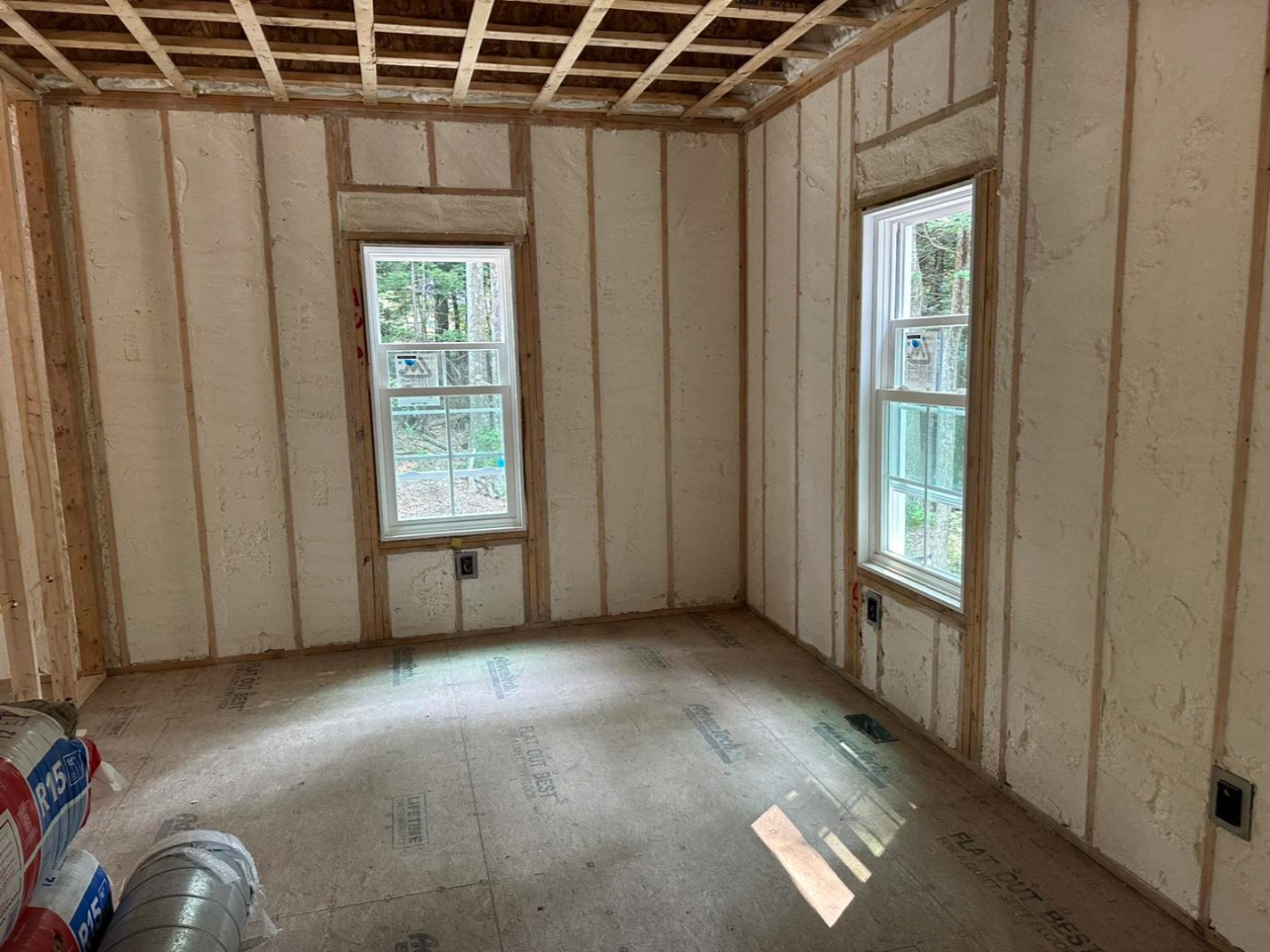
A proper insulation system makes a space in Palmer, MA feel more solid by blocking drafts, stabilizing indoor temperatures, and reducing noise transmission. It seals gaps that let cold air seep in during harsh winters, creating consistent warmth without cold spots. Sound waves get absorbed, so echoes and outside noises fade, giving rooms a fuller, quieter presence. These effects combine to build a sense of stability and enclosure.
This article breaks down the mechanics behind that solid feeling, with practical details on how insulation works in Palmer’s variable climate. Readers gain clear steps to assess their own setups. Information draws from years of handling insulation projects in central Massachusetts, where cold snaps test building performance.
Insulation adds substance to a space through thermal control. In Palmer, winter lows often dip below 20°F, pushing heat loss through uninsulated walls and attics. A quality system traps heat inside, cutting energy use by up to 25%, according to U.S. Department of Energy. Rooms stay even, without the hollow chill that makes spaces feel drafty and empty.
Air sealing pairs with insulation to stop movement. Gaps around windows or outlets allow wind to whistle through, eroding comfort. Proper installation plugs these paths, so air stays put, and the structure holds steady against pressure changes. This approach enhances the overall sense of enclosure before delving into specific benefits like thermal stability.
Temperature swings create an unsteady feel. Insulation materials like fiberglass or foam resist heat flow, measured by R-value. Higher R-values mean better resistance. For Palmer homes, aim for R-38 in attics to match the region’s heating degree days, which total over 6,000 annually per National Oceanic and Atmospheric Administration.
This stability prevents walls from feeling cold to the touch. Touch a bare exterior wall in January, and it sucks warmth from your hand. Insulated ones stay neutral, signaling a buffer against outside cold.
Check for moisture buildup before adding insulation. In humid Palmer summers, trapped dampness weakens materials. Dry out areas first to keep the system effective long-term.
Noise makes rooms seem thin and open. Insulation fills voids in walls and floors, dampening vibrations. Cellulose or rock wool excels here, absorbing up to 50% more sound than bare studs, as noted in reports from Acoustical Society of America.
In multi-story Palmer homes near Route 20, traffic hum fades. Conversations stay private, and footsteps upstairs sound muffled. The result? A space that encloses sound, feeling dense and grounded. Beyond these sensory improvements, insulation also brings tangible economic advantages to homeowners.
Homeowners upgrading insulation services clear gains. A 2022 study by Lawrence Berkeley National Laboratory found that proper systems reduce heating costs by 15-20% in Northeast homes. In Massachusetts, where average winter bills hit $1,200, this saves hundreds yearly.
Another fact: Insulated spaces sell faster. Real estate data from National Association of Realtors shows energy-efficient features boost property values by 5-7% in cold climates like Palmer’s.
Different materials deliver solidity in varied ways. The table below compares common options for Palmer conditions.
| Material | R-Value per Inch | Sound Absorption | Best for Palmer Climate | Cost Range (per sq ft) |
|---|---|---|---|---|
| Fiberglass | 2.9-3.8 | Moderate | Attics, walls | $0.30-$1.50 |
| Cellulose | 3.1-3.8 | High | Walls, floors | $0.60-$2.00 |
| Spray Foam | 3.6-7.0 | High | Sealing gaps | $0.50-$3.00 |
| Rigid Foam | 3.8-5.0 | Low | Basements | $0.25-$2.00 |
Choose based on the space’s needs. Cellulose suits older Palmer homes with settling issues, as it packs tightly.
In Palmer’s historic buildings, add insulation without removing siding. Blown-in methods fit through small holes, preserving the look while adding density.

Assess current setup first. Measure energy bills over a winter month; spikes signal poor insulation. Inspect for drafts using a candle flame near edges—flickering shows leaks.
Factor in building age. Pre-1980 Palmer homes often lack vapor barriers, risking condensation. Plan for that in upgrades.
Budget for full coverage. Partial jobs leave weak spots, so calculate square footage accurately. Local codes require minimum R-values; check Massachusetts State Building Code for compliance.
Weigh long-term savings. Initial costs range $1,000-$5,000, but rebates through Mass Save cut that by 50%.
Install in fall before Palmer’s first freeze. Materials settle better in mild weather, ensuring even performance.
Many wonder about DIY options. Basic air sealing works for small gaps, but full insulation jobs require professionals for safety and even coverage.
Others ask about eco-friendliness. Recycled-content materials, such as denim insulation, perform well and avoid off-gassing, making them a sustainable choice.
Yes, it raises appeal in a market where buyers seek lower bills. Efficient homes list 10% higher in Massachusetts.
Quality installs endure 20-50 years. Fiberglass holds up best in dry attics; foam may need checks for settling.
It helps by evening temperatures, but pair with duct sealing for best results in forced-air systems common in Palmer.
For attics or walls, yes. Pros spot hidden issues like mold that DIY misses.
R-49 for attics and R-19 for walls match the area’s 6,000+ heating days, per energy guidelines.
Proper insulation in Palmer delivers solidity through steady temperatures, quiet spaces, and sealed structures. Palmer residents benefit most in cold months, cutting drafts and noise. Evaluate your home’s age, bill patterns, and weak points to decide on upgrades. Match choices to specific needs and future plans for lasting comfort.
Contact Lamothe Spray Foam Insulation at (508) 847-0119 or [email protected] to discuss your Palmer’s insulation needs. Schedule a no-obligation review to identify gaps and options tailored to local conditions. Take this step toward a more stable, comfortable environment that stands up to New England weather.